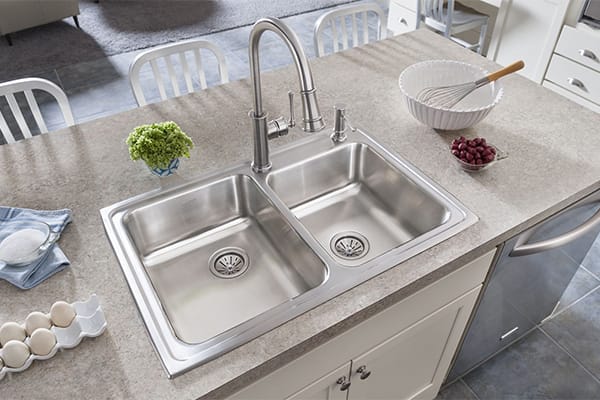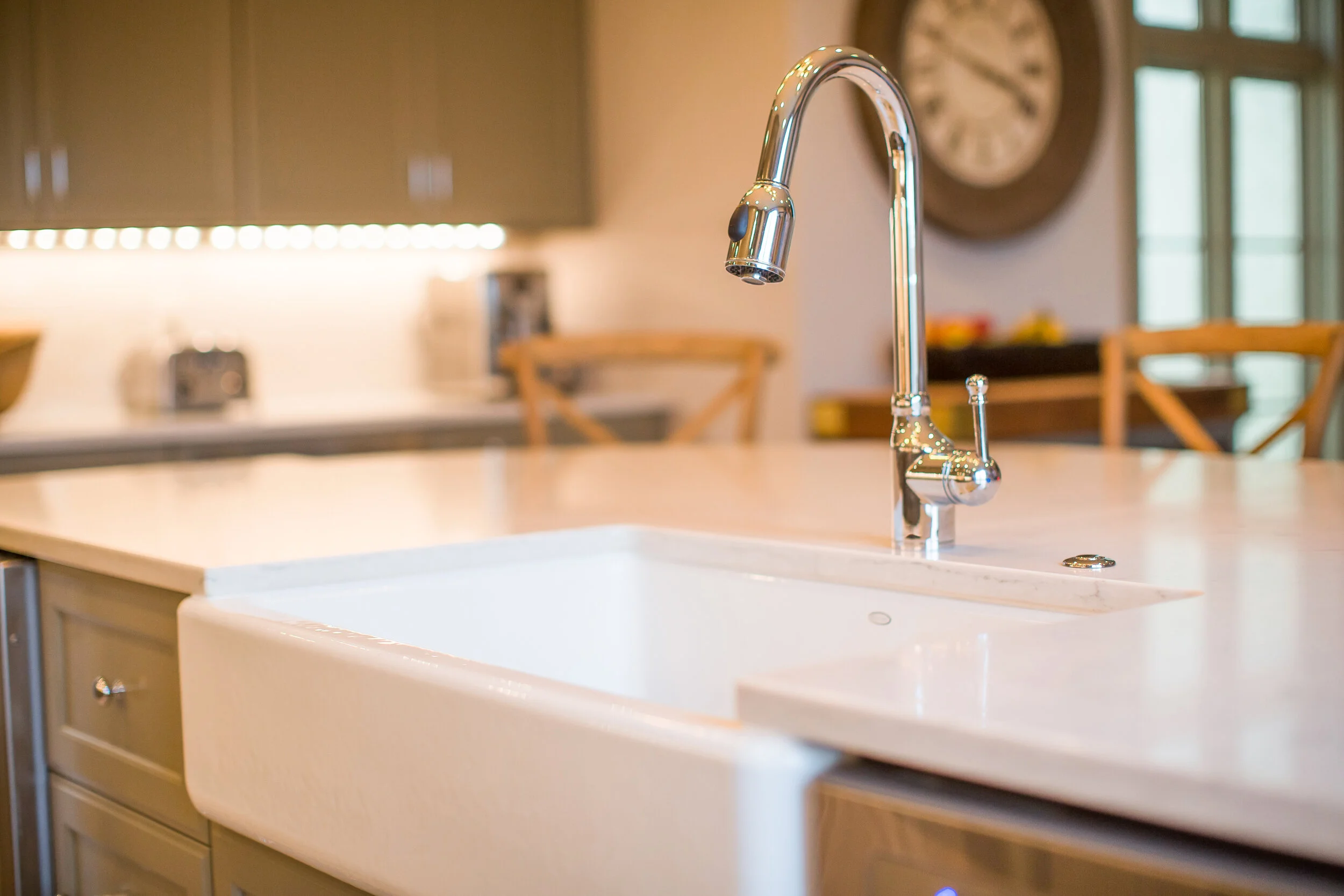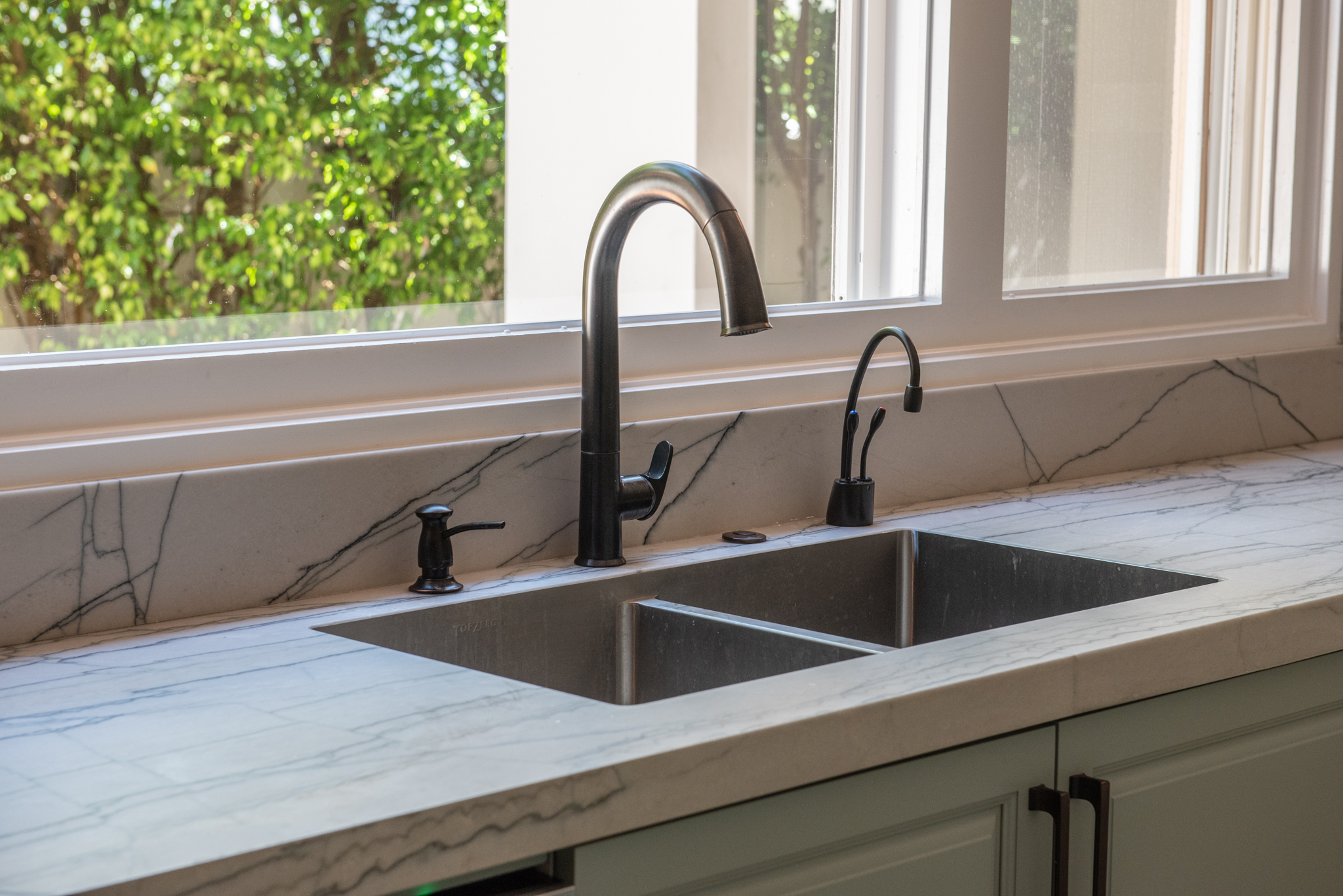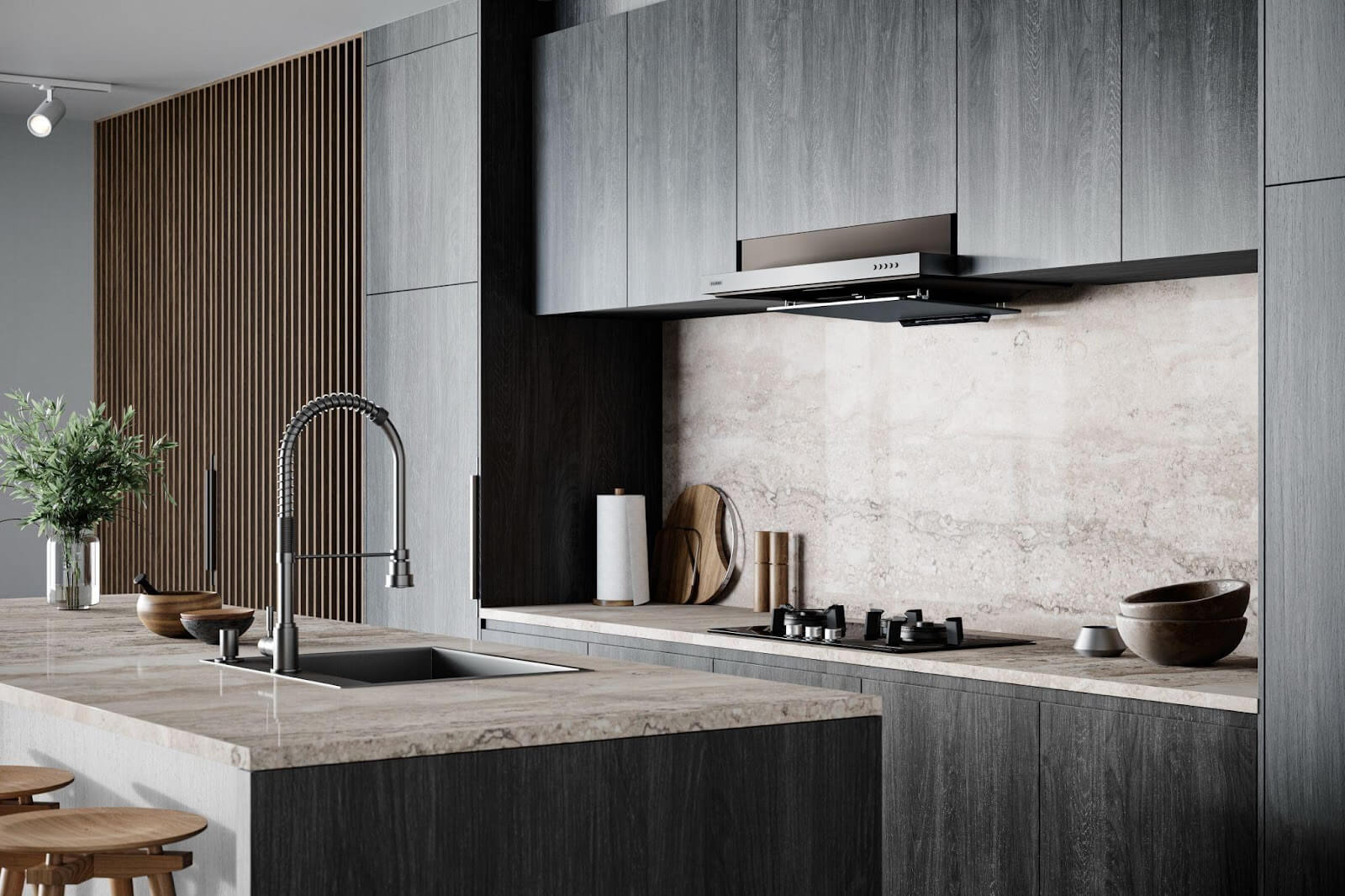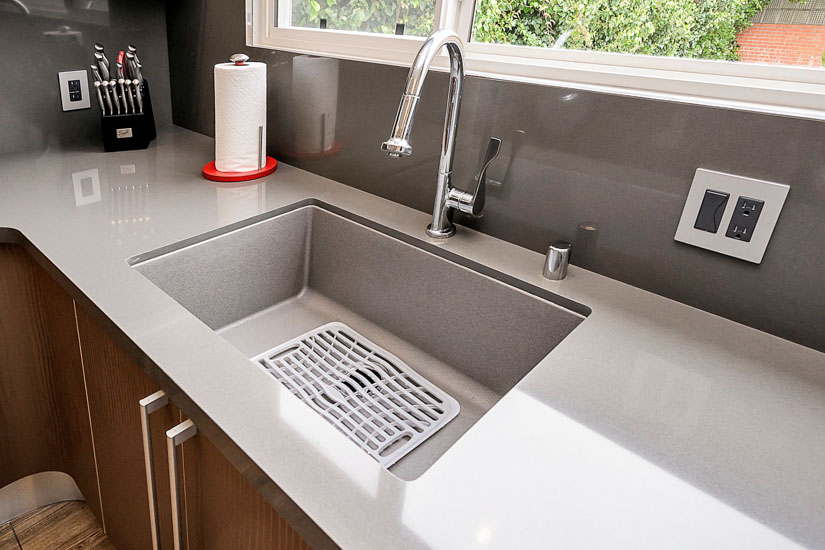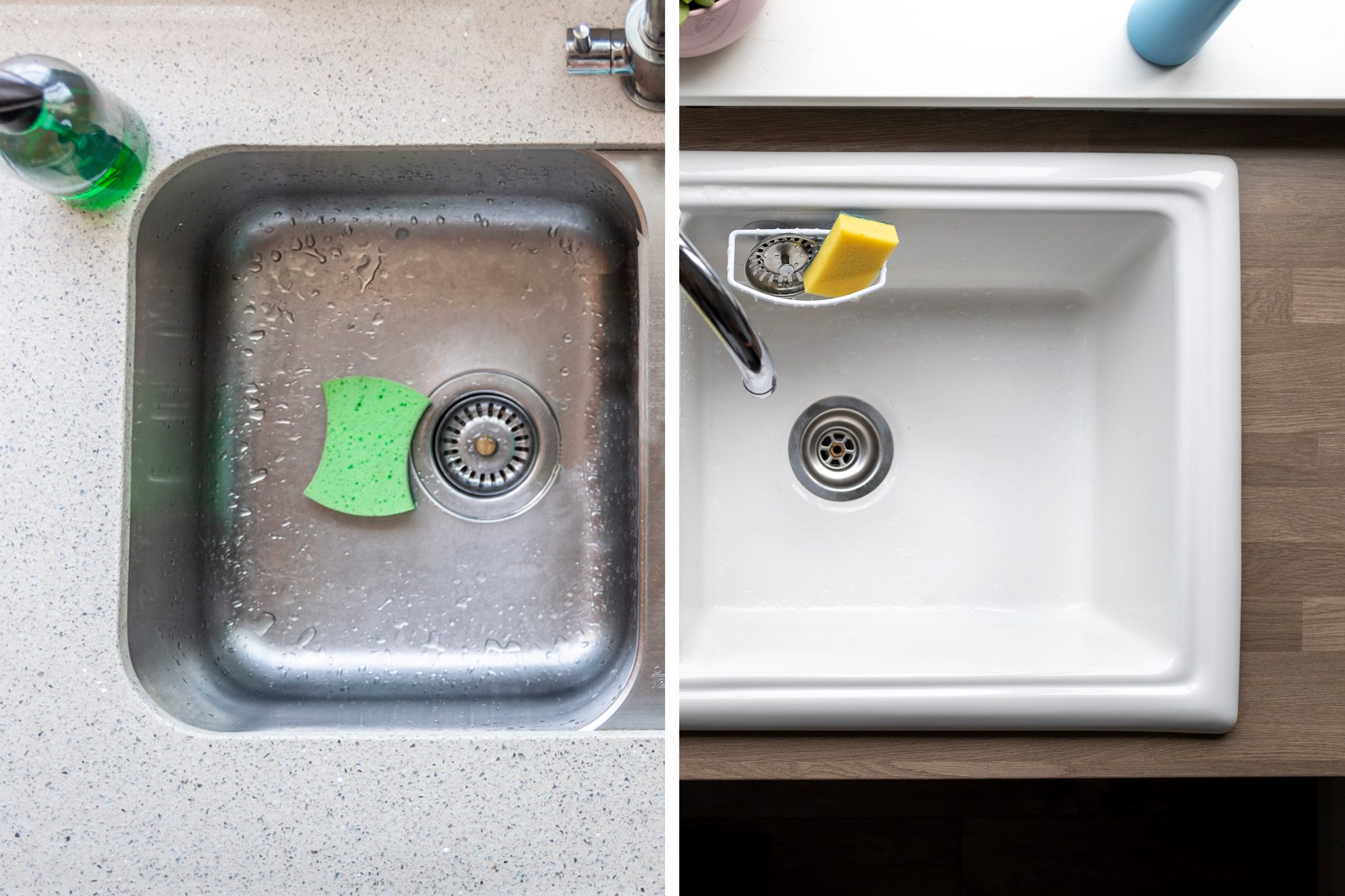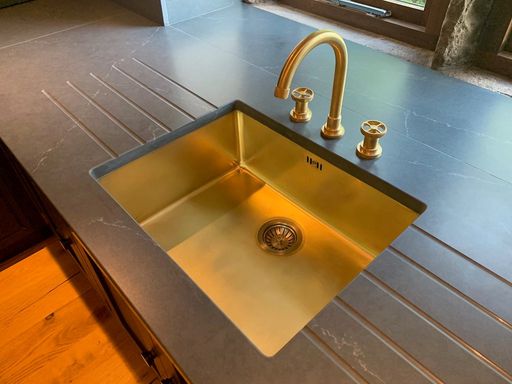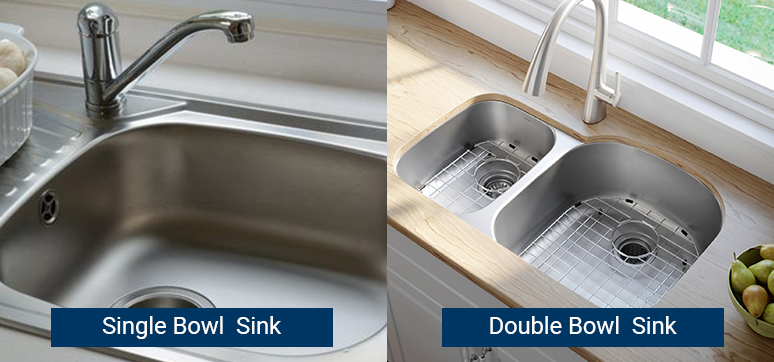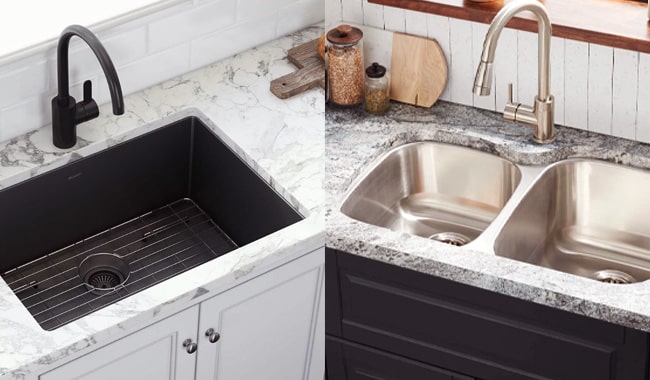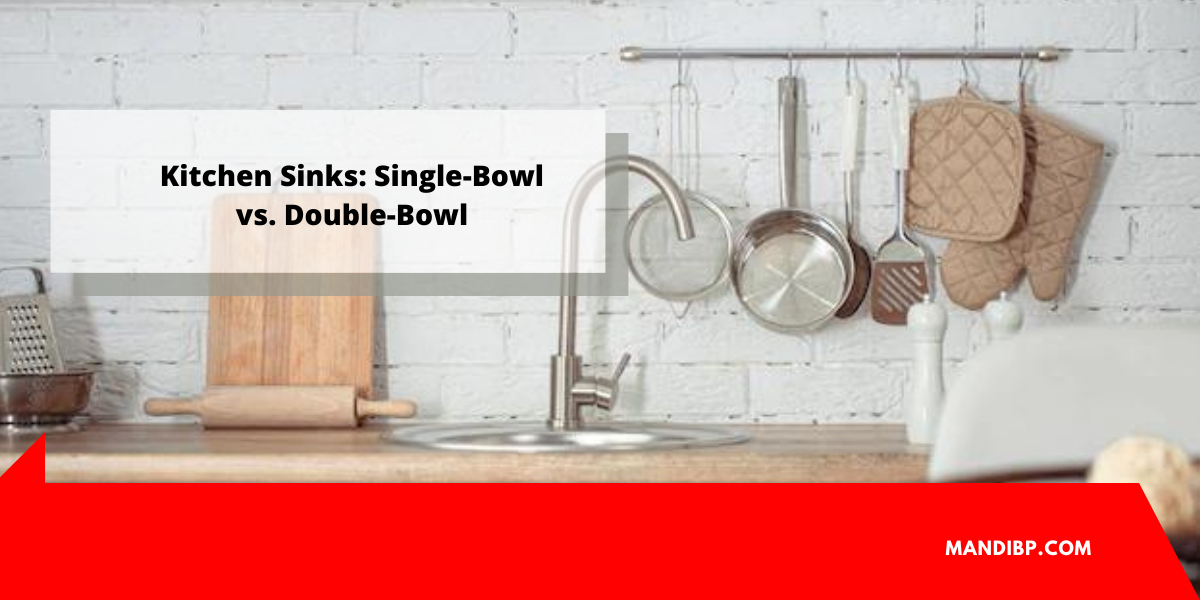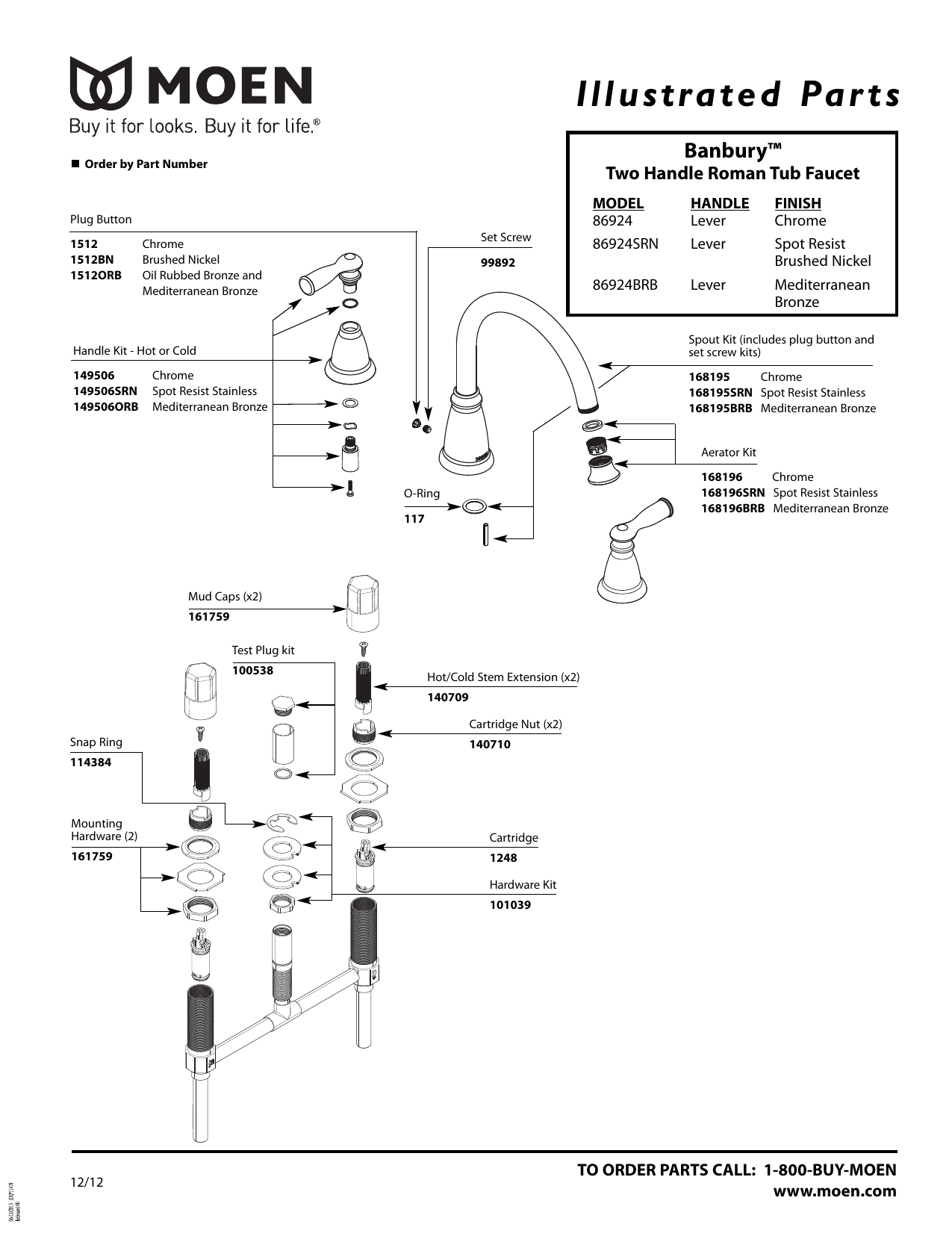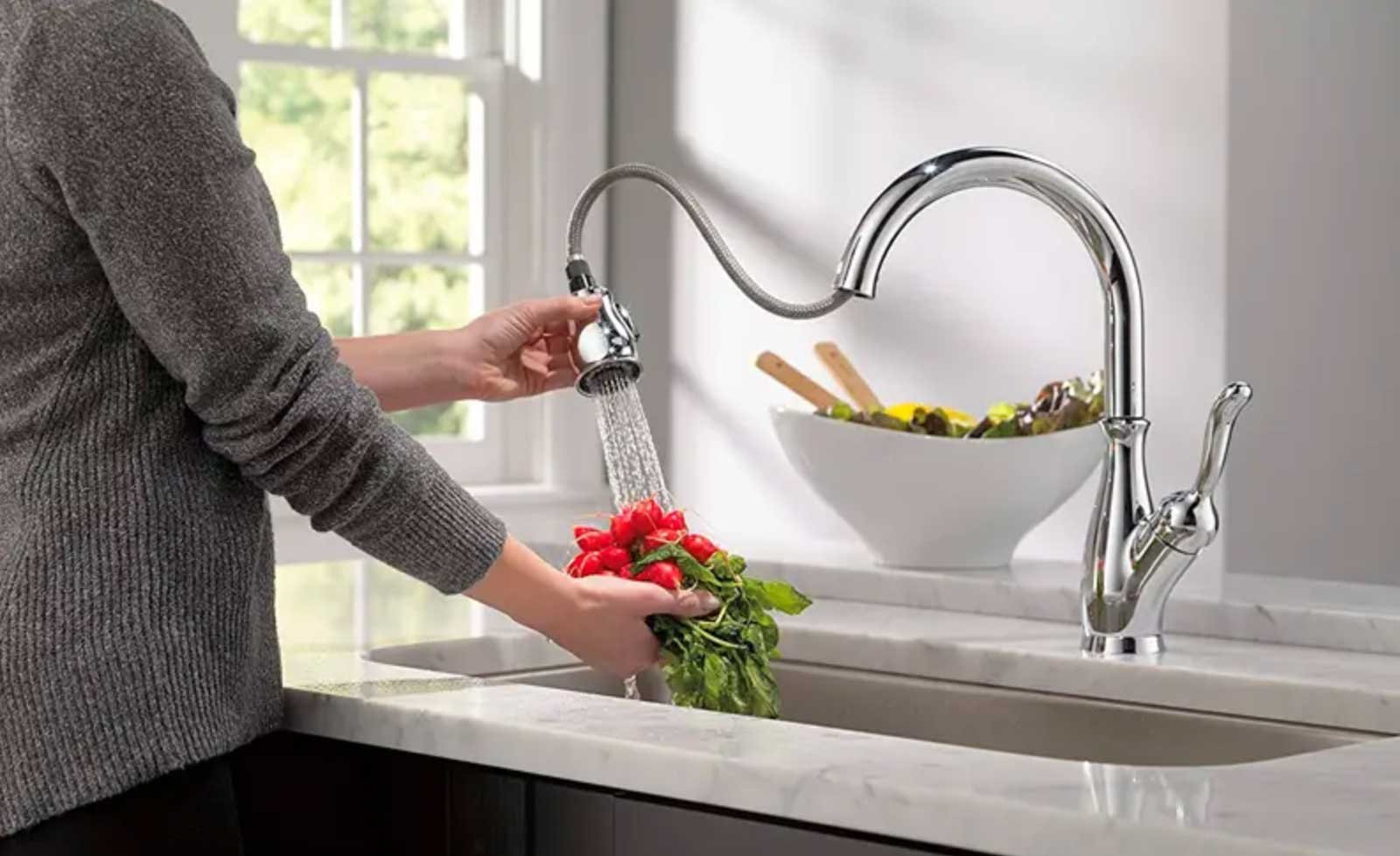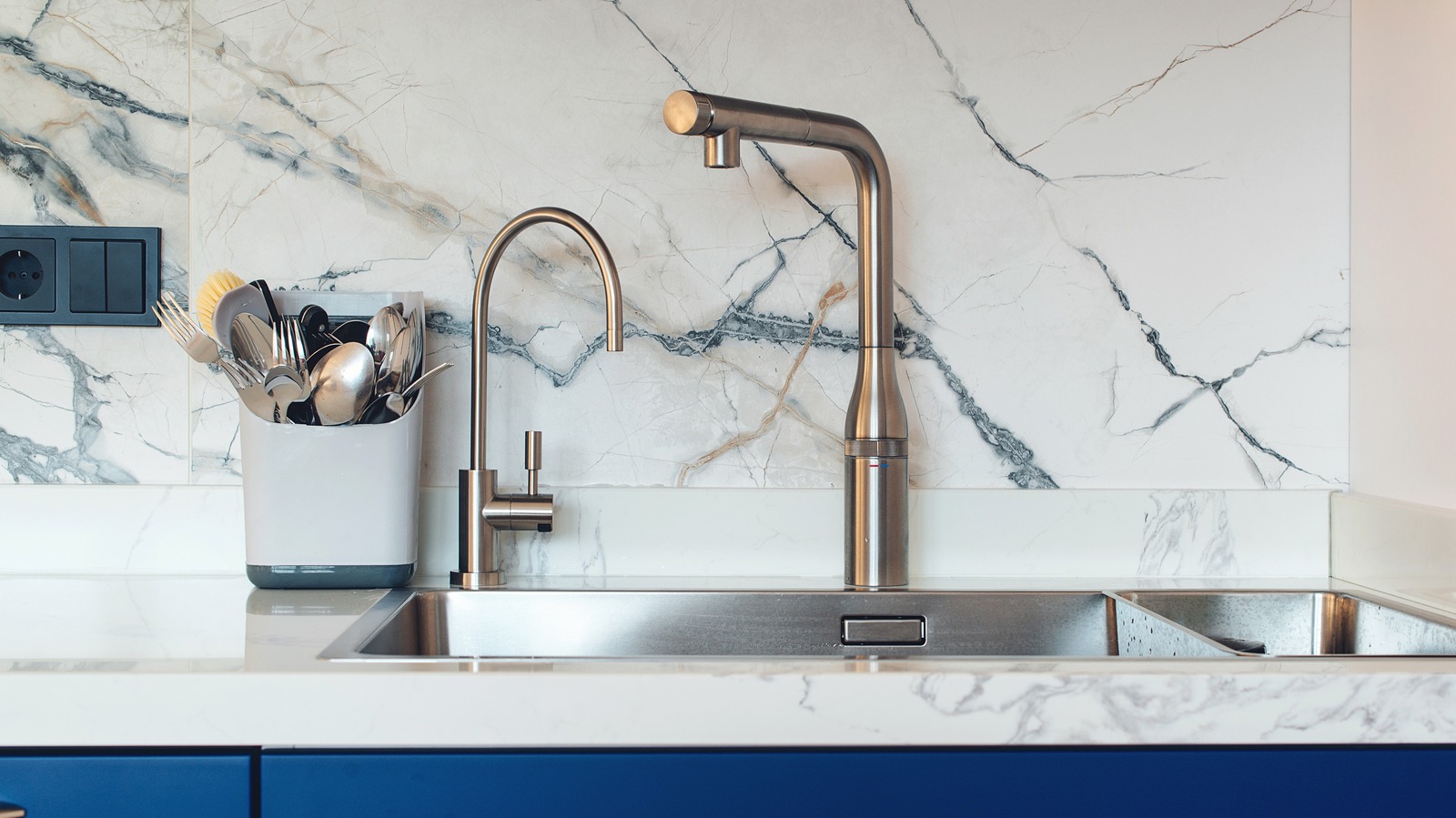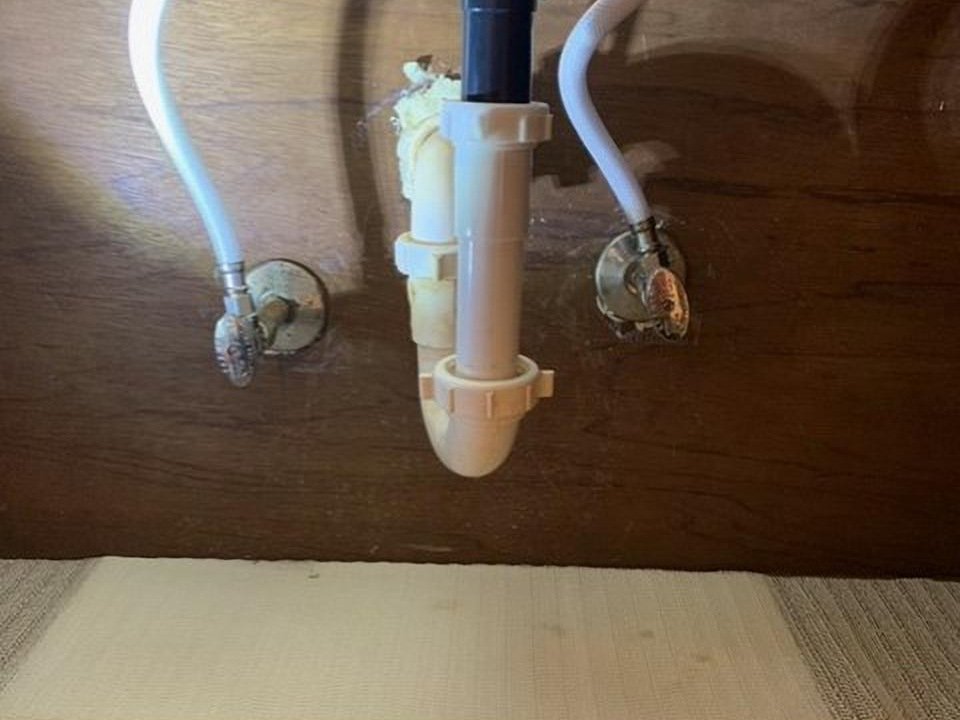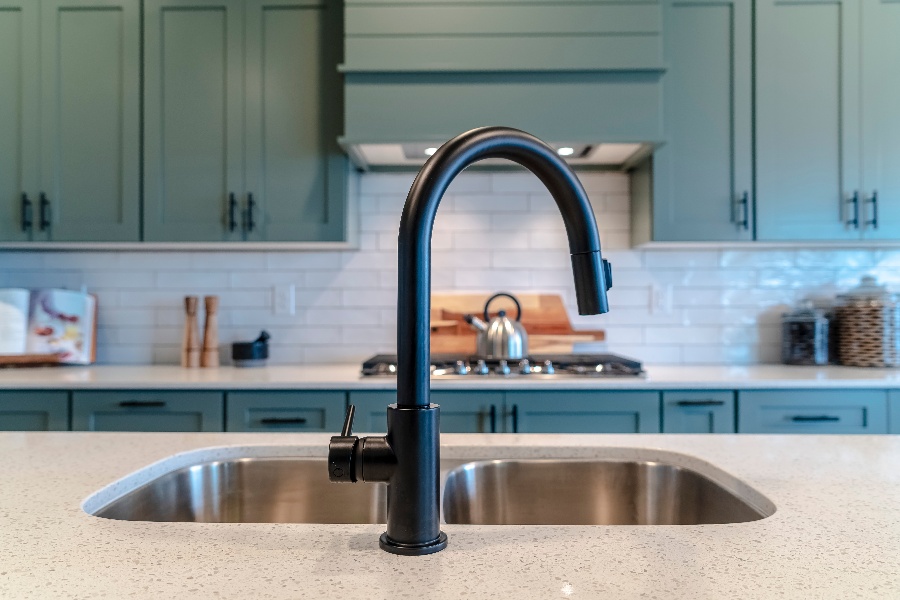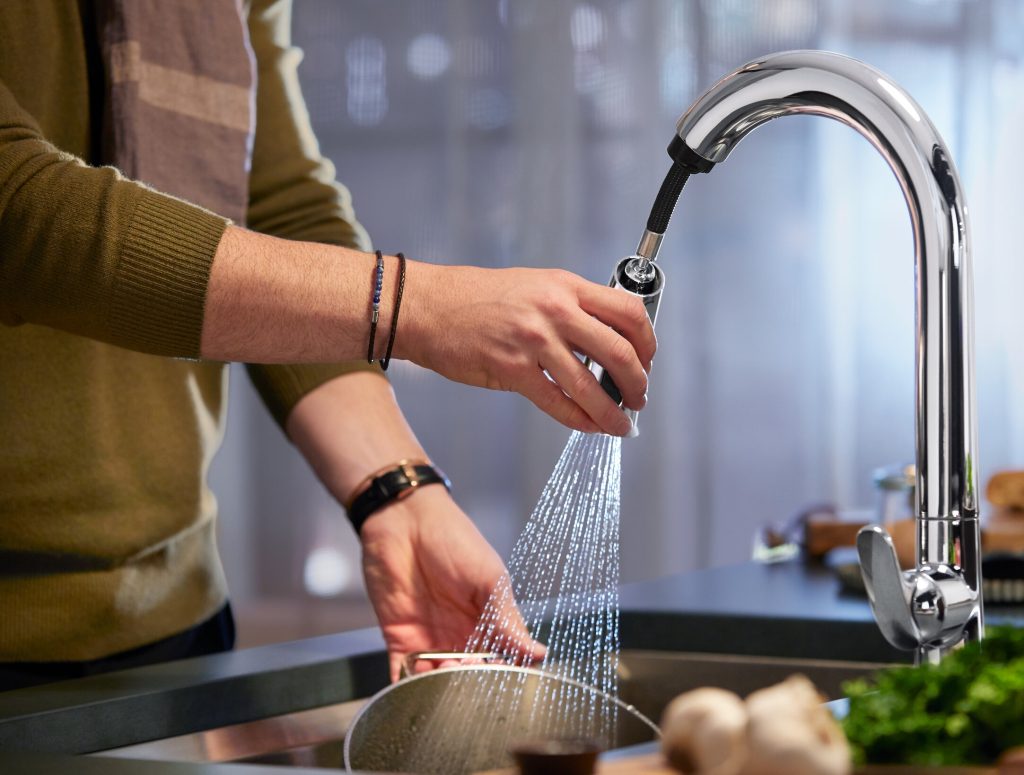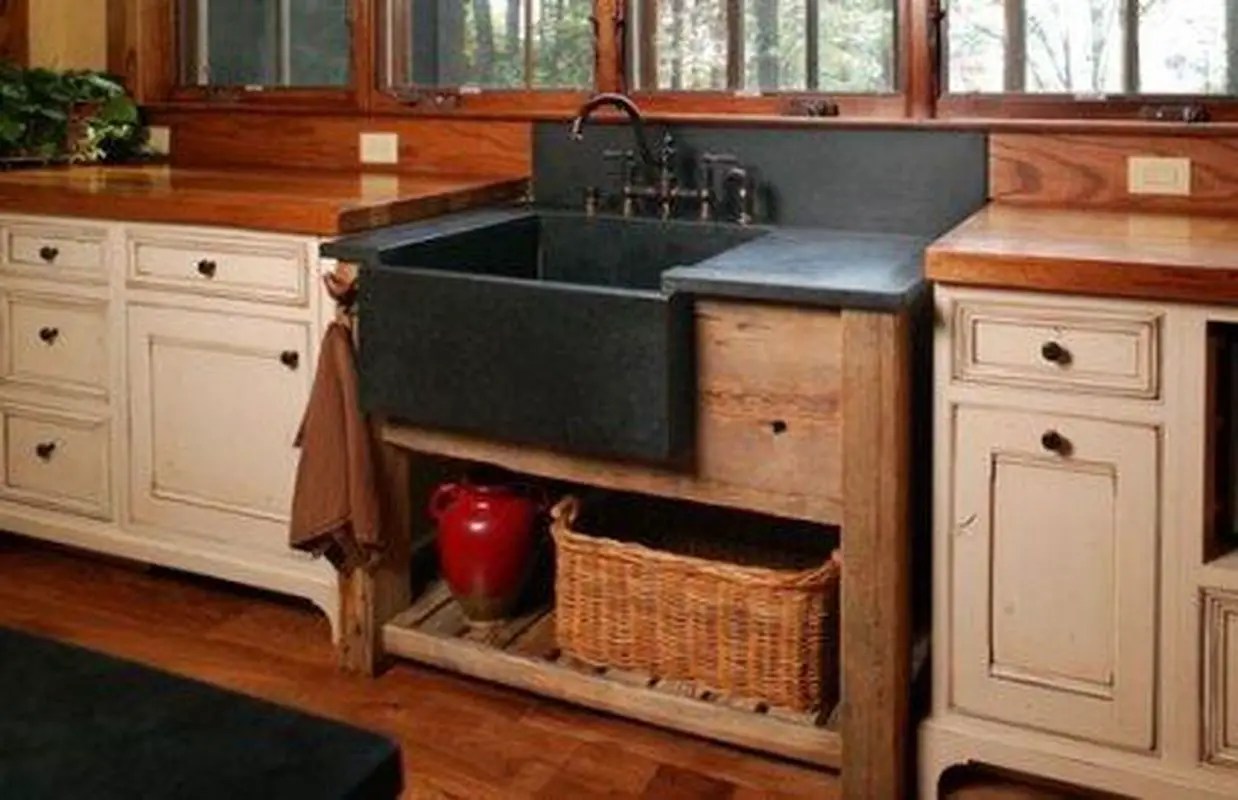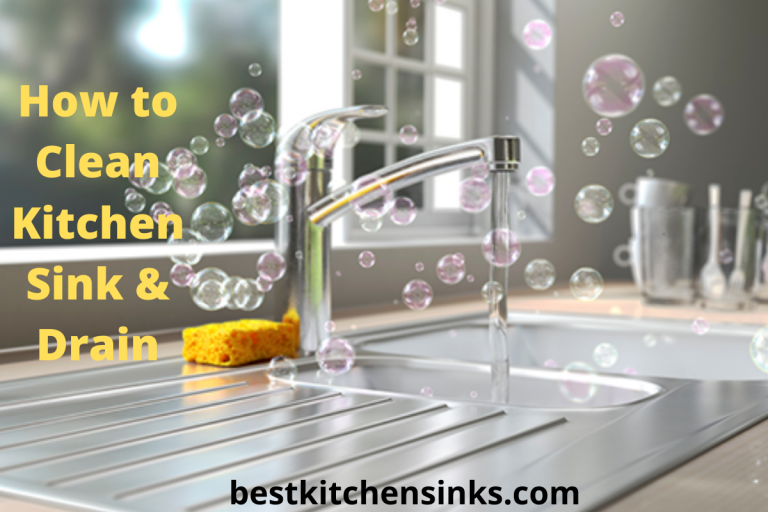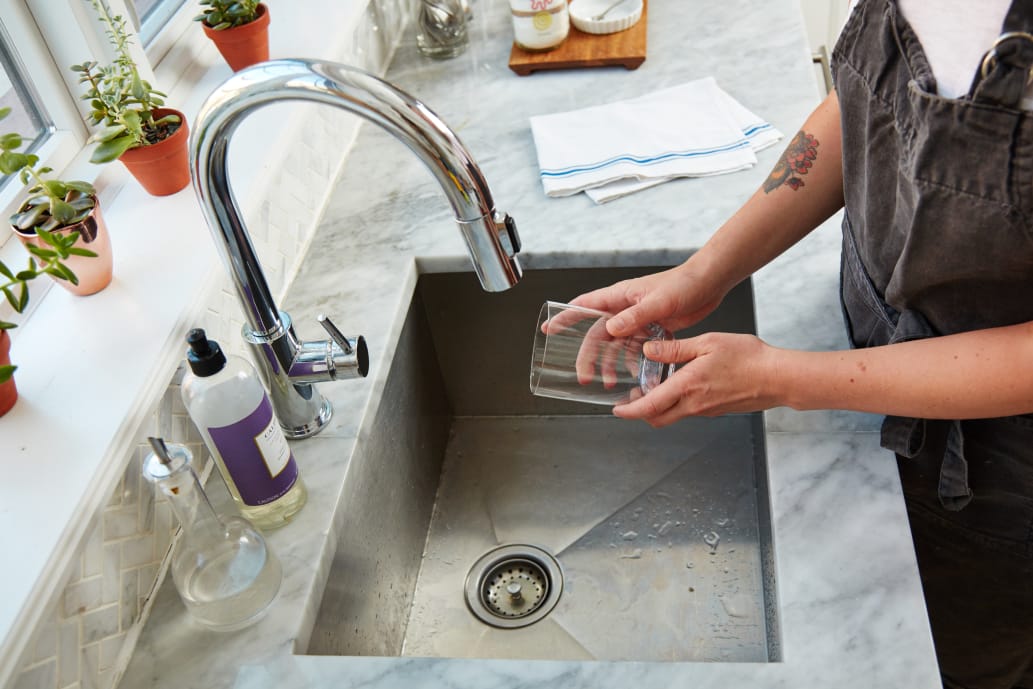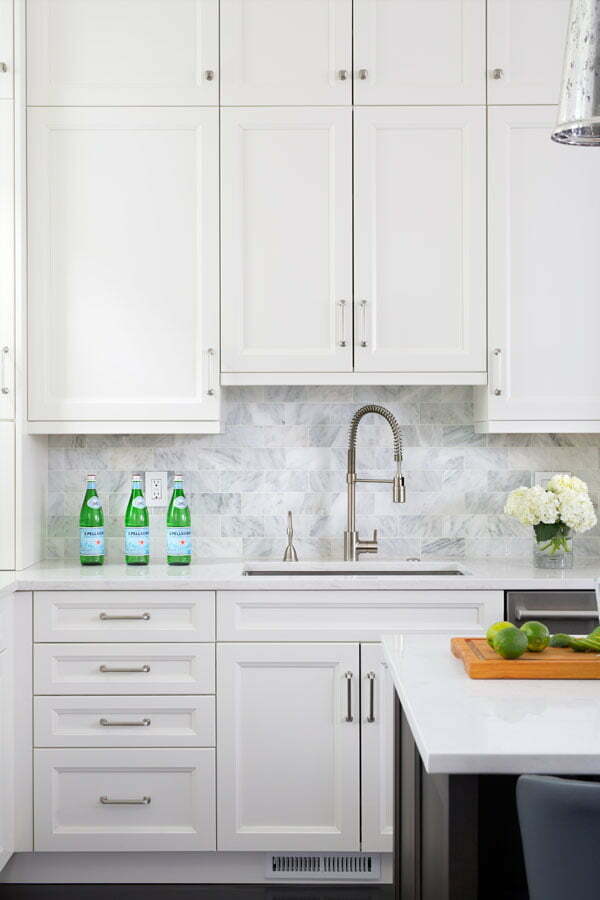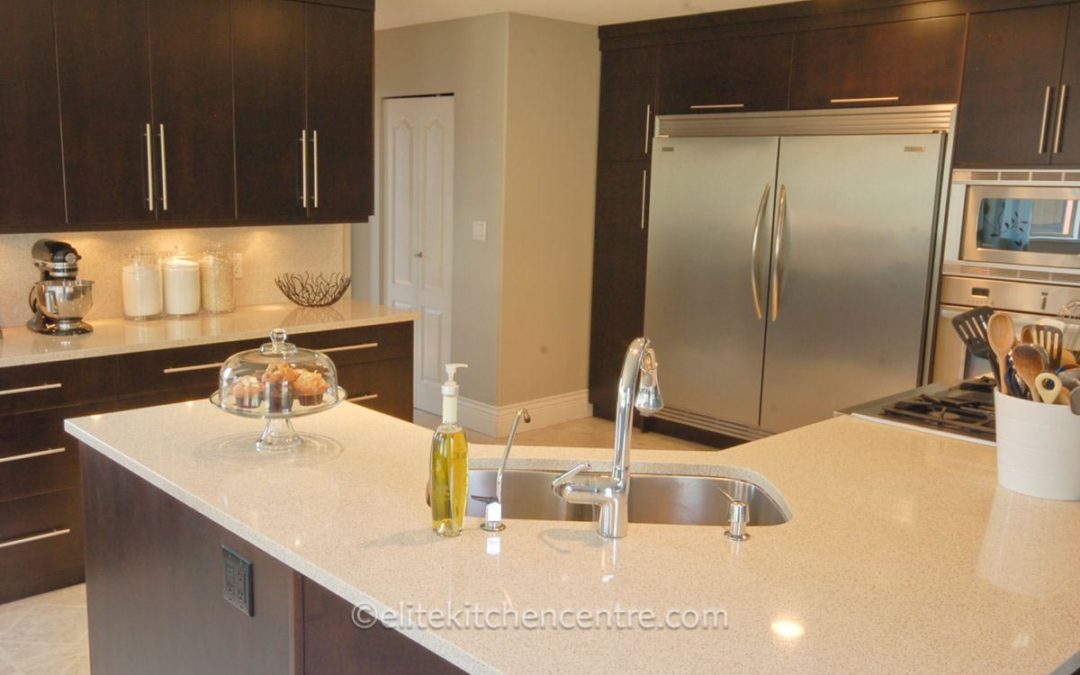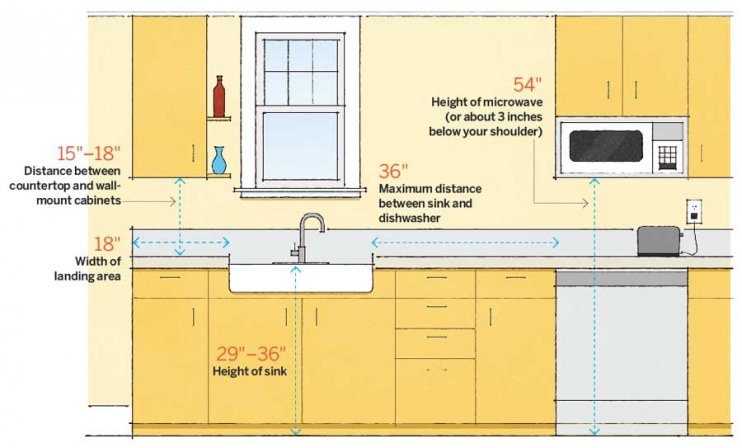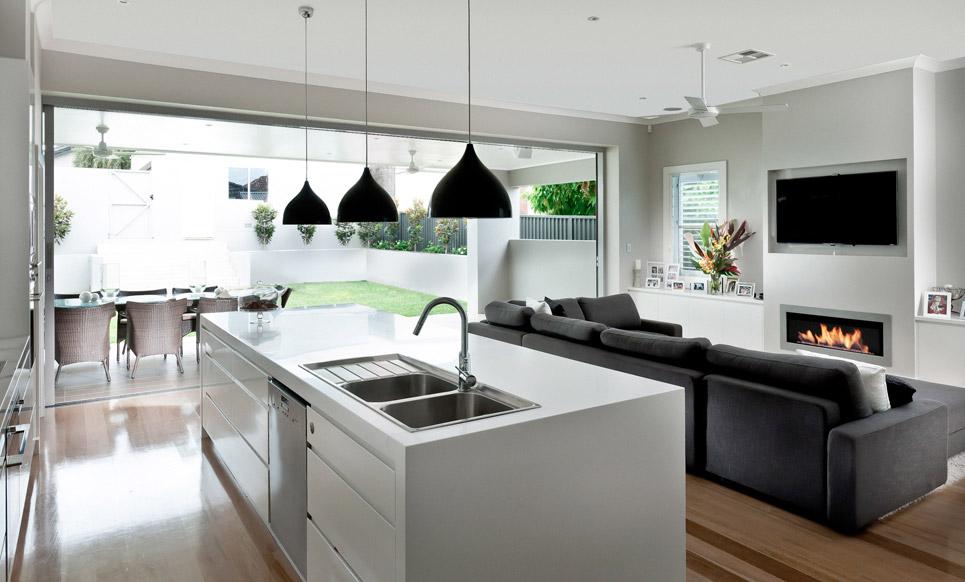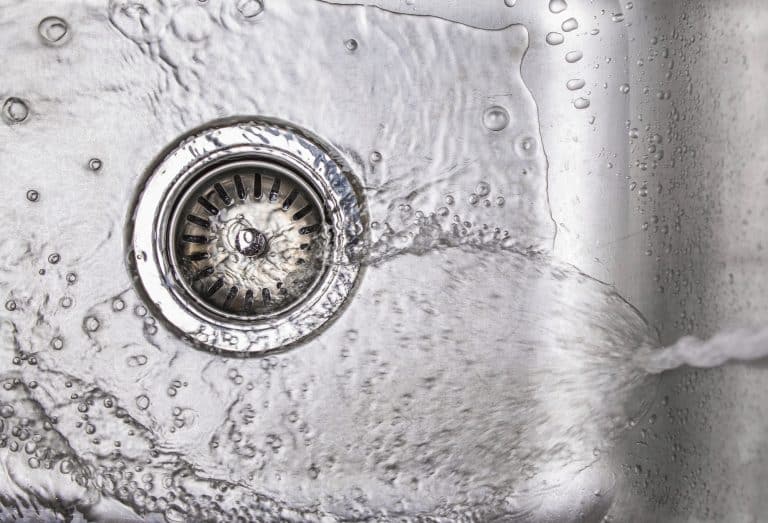1. Types of kitchen sinks to consider
When it comes to choosing a sink for your kitchen, one of the first things you need to consider is the type of sink you want. There are several options available, each with its own unique features and benefits. The most common types of kitchen sinks are top mount, undermount, farmhouse, and integrated sinks.
Top mount sinks are the most traditional and budget-friendly option. They are installed from above the countertop and have a visible lip around the edges. These sinks are easy to install and can be used with any type of countertop material. However, they can be more difficult to clean as dirt and grime can get trapped in the lip.
Undermount sinks, on the other hand, are installed from underneath the countertop and have no visible lip. This gives a more seamless and modern look to the kitchen. They are also easier to clean as there is no lip to trap dirt. However, they are usually more expensive and can only be used with solid surface countertops like granite or quartz.
Farmhouse sinks, also known as apron front sinks, have become increasingly popular in recent years. They have a large, deep basin and the front of the sink is exposed and sits slightly lower than the countertop. These sinks are perfect for a rustic or farmhouse-style kitchen and can add a touch of charm to any space.
Integrated sinks are made from the same material as the countertop, creating a seamless and modern look. These sinks are usually made from materials like quartz, granite, or solid surface and can be custom made to fit your specific needs. They are a great option for those who want a sleek and minimalist look in their kitchen.
2. How to choose the right size sink for your kitchen
Choosing the right size sink for your kitchen is crucial for both functionality and aesthetics. The size of your sink will depend on the size of your kitchen and your personal preferences. Here are some factors to consider when determining the size of your kitchen sink:
Kitchen size: If you have a small kitchen, it's best to go for a smaller sink to maximize counter space. On the other hand, a larger kitchen can accommodate a bigger sink for more functionality.
Cooking habits: If you do a lot of cooking and food prep in your kitchen, you may want to consider a larger sink with a deeper basin to fit pots and pans. If you mainly use your sink for washing dishes, a smaller sink may suffice.
Number of people in the household: If you have a large family, a bigger sink may be more practical to accommodate more dirty dishes. However, if you live alone or with a partner, a smaller sink may be sufficient.
It's important to also consider the size of your countertops and the amount of space available for the sink. You don't want to choose a sink that is too big for your countertop, as it may look disproportionate and be difficult to install.
3. Materials to consider when choosing a kitchen sink
The material of your kitchen sink can significantly impact both its durability and aesthetics. Here are some popular materials to consider when choosing a kitchen sink:
Stainless steel: Stainless steel sinks are a popular choice for many homeowners due to their durability and affordability. They are easy to clean and resistant to stains and scratches. However, they can be noisy and may show water spots if not dried properly.
Cast iron: Cast iron sinks are another durable option, often coated in enamel for a smooth and glossy finish. They are resistant to stains and scratches and can add a touch of elegance to any kitchen. However, they can be heavy and may require extra support to install.
Composite granite: These sinks are made from a mixture of granite and resin, making them durable and resistant to stains and scratches. They are available in a variety of colors and can add a modern and luxurious touch to your kitchen. However, they can be more expensive than other materials.
Fireclay: Similar to cast iron, fireclay sinks are coated in enamel for a smooth and glossy finish. They are resistant to stains and scratches and can add a vintage and rustic feel to your kitchen. However, they can be more expensive and may require extra support to install.
It's important to also consider the maintenance and cleaning requirements of each material when making your decision. Some materials may require special care and cleaning products, so make sure to do your research beforehand.
4. Top mount vs. undermount sinks: pros and cons
As mentioned earlier, top mount and undermount sinks are two popular options for kitchen sinks. Here are some pros and cons of each type to help you make a decision:
Top mount sinks:
5. Single vs. double bowl sinks: which is better?
Another important factor to consider when choosing a sink is the number of bowls. Here are some pros and cons of single and double bowl sinks:
Single bowl sinks:
6. Choosing the right faucet for your kitchen sink
The faucet is an essential component of any kitchen sink and should not be overlooked when choosing a sink. Here are some factors to consider when selecting a faucet:
Metal finish: The most common options for faucet finishes are stainless steel, chrome, and brushed nickel. Choose a finish that complements the other hardware in your kitchen.
Style: There are several styles of faucets to choose from, including single-handle, two-handle, and pull-down or pull-out sprayer faucets. Consider your personal preferences and the functionality you need when selecting a style.
Height and reach: The height and reach of the faucet should also be taken into consideration. Make sure the faucet is tall enough to fit large pots and pans underneath and has enough reach to cover the entire sink.
Additional features: Some faucets come with additional features like touchless technology, pull-down sprayers, and water filtration systems. These can add convenience and functionality to your kitchen, but may also come at a higher cost.
7. How to determine the best placement for your kitchen sink
The placement of your kitchen sink is another crucial factor to consider. Here are some tips to help you determine the best placement for your sink:
8. Budget-friendly options for kitchen sinks
Kitchen renovations can be expensive, but there are budget-friendly options available for those looking to save some money. Here are some tips for finding a budget-friendly kitchen sink:
9. How to maintain and clean your kitchen sink
Proper maintenance and cleaning can help prolong the lifespan of your kitchen sink. Here are some tips for keeping your sink in top condition:
10. Tips for choosing a sink that complements your kitchen design
Your kitchen sink is not just a functional element, it can also add to the overall design and aesthetic of your kitchen. Here are some tips for choosing a sink that complements your kitchen design:
Choosing the Perfect Kitchen Sink: A Guide for Homeowners
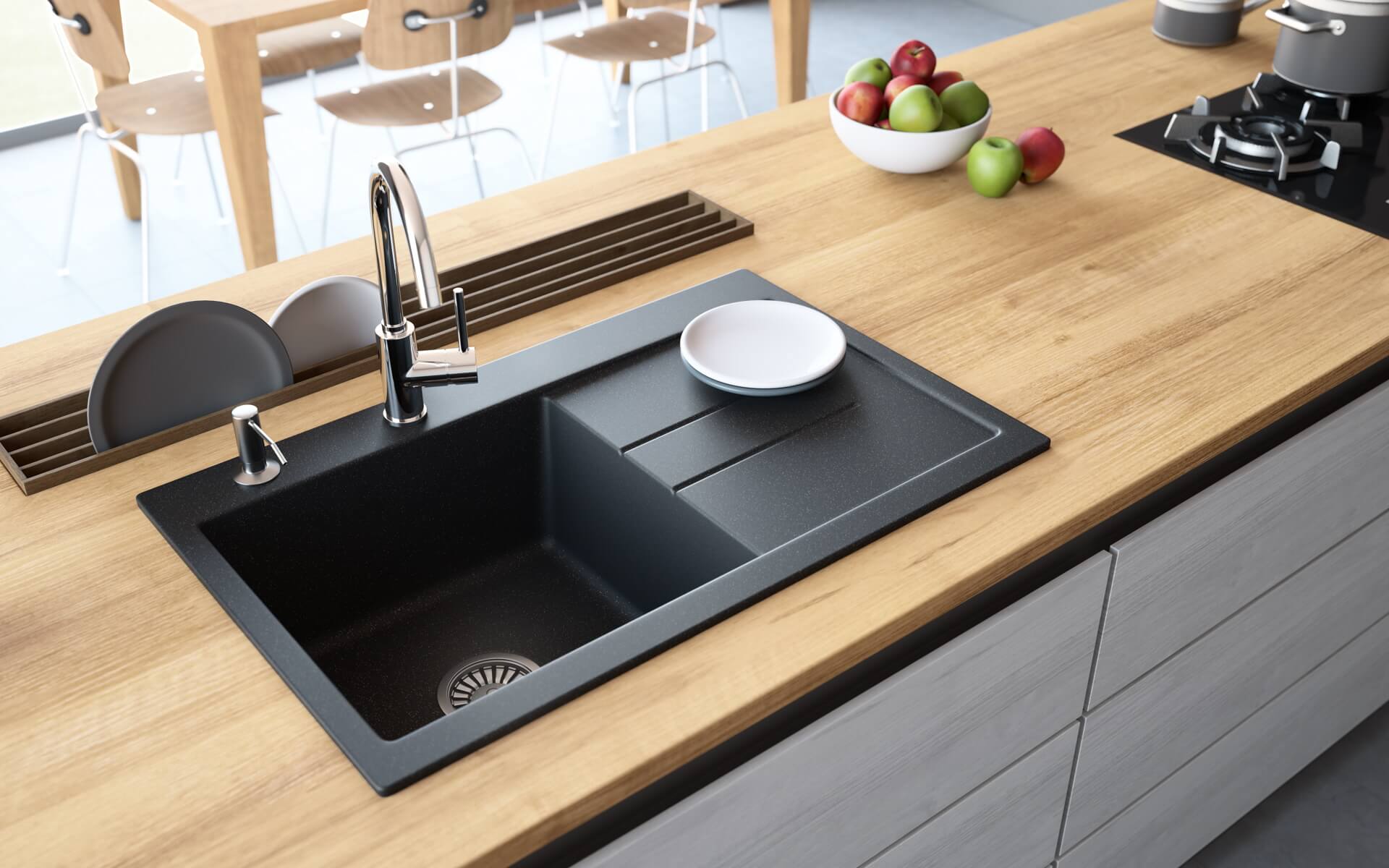
Factors to Consider
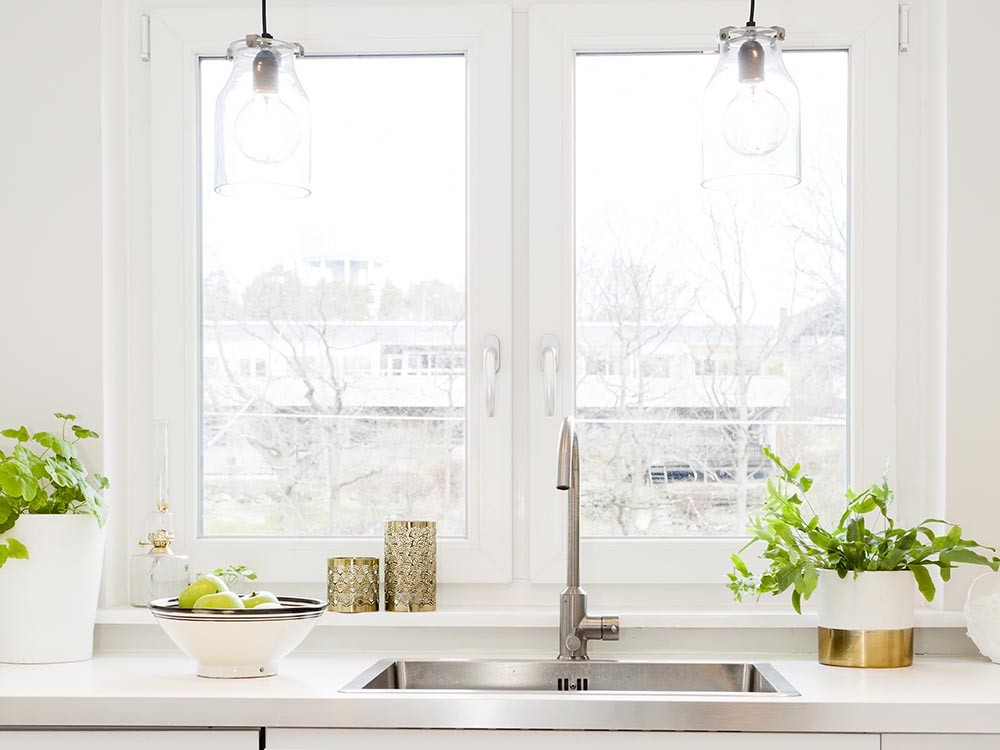 When it comes to designing your dream kitchen, the
sink
is often an overlooked element. However, it is an essential part of your kitchen and can greatly impact the overall functionality and style of the space. There are several factors to consider when
choosing a sink for the kitchen
, and it is important to carefully weigh your options before making a decision.
When it comes to designing your dream kitchen, the
sink
is often an overlooked element. However, it is an essential part of your kitchen and can greatly impact the overall functionality and style of the space. There are several factors to consider when
choosing a sink for the kitchen
, and it is important to carefully weigh your options before making a decision.
Size and Configuration
 The first thing to consider is the size and configuration of the
sink
. This will depend on the size of your kitchen and your personal preferences. A larger
sink
may be necessary for those who frequently cook and entertain, while a smaller
sink
may suffice for those who have a smaller household. You should also consider the number of
bowl
s and
drain
s you need. A single
bowl
sink
may be sufficient for some, while others may prefer the versatility of a double
bowl
sink
.
The first thing to consider is the size and configuration of the
sink
. This will depend on the size of your kitchen and your personal preferences. A larger
sink
may be necessary for those who frequently cook and entertain, while a smaller
sink
may suffice for those who have a smaller household. You should also consider the number of
bowl
s and
drain
s you need. A single
bowl
sink
may be sufficient for some, while others may prefer the versatility of a double
bowl
sink
.
Material and Style
 Another important factor to consider is the
material
and
style
of the
sink
. There are many options available, each with its own unique benefits and drawbacks.
Stainless steel
is a popular choice for its durability and affordability, while
granite composite
offers a more modern and sleek look. You should also consider the
style
of the
sink
, whether it be undermount, drop-in, or farmhouse. Each style has its own aesthetic appeal and may work better with certain kitchen designs.
Another important factor to consider is the
material
and
style
of the
sink
. There are many options available, each with its own unique benefits and drawbacks.
Stainless steel
is a popular choice for its durability and affordability, while
granite composite
offers a more modern and sleek look. You should also consider the
style
of the
sink
, whether it be undermount, drop-in, or farmhouse. Each style has its own aesthetic appeal and may work better with certain kitchen designs.
Functionality and Maintenance
 A
sink
is not just a decorative element in your kitchen, but it also serves a functional purpose. Therefore, it is important to consider the
functionality
of the
sink
and how it will fit into your daily routine. For example, if you frequently wash large pots and pans, a deeper
sink
may be more practical. It is also important to think about the
maintenance
required for each
material
and
style
of
sink
. Some may require more upkeep than others, so be sure to choose one that fits your lifestyle.
A
sink
is not just a decorative element in your kitchen, but it also serves a functional purpose. Therefore, it is important to consider the
functionality
of the
sink
and how it will fit into your daily routine. For example, if you frequently wash large pots and pans, a deeper
sink
may be more practical. It is also important to think about the
maintenance
required for each
material
and
style
of
sink
. Some may require more upkeep than others, so be sure to choose one that fits your lifestyle.
Budget
 Lastly, it is important to keep your budget in mind when
choosing a sink for the kitchen
. While there are many high-end options available, there are also affordable options that can still provide the functionality and style you desire. It is important to prioritize your needs and wants and choose a
sink
that fits within your budget.
In conclusion,
choosing the perfect kitchen sink
is not a decision to be taken lightly. It is important to carefully consider the size, configuration,
material
and
style
, functionality, and budget before making a final decision. By doing so, you can ensure that your
sink
not only complements your kitchen design but also meets your practical needs.
Lastly, it is important to keep your budget in mind when
choosing a sink for the kitchen
. While there are many high-end options available, there are also affordable options that can still provide the functionality and style you desire. It is important to prioritize your needs and wants and choose a
sink
that fits within your budget.
In conclusion,
choosing the perfect kitchen sink
is not a decision to be taken lightly. It is important to carefully consider the size, configuration,
material
and
style
, functionality, and budget before making a final decision. By doing so, you can ensure that your
sink
not only complements your kitchen design but also meets your practical needs.
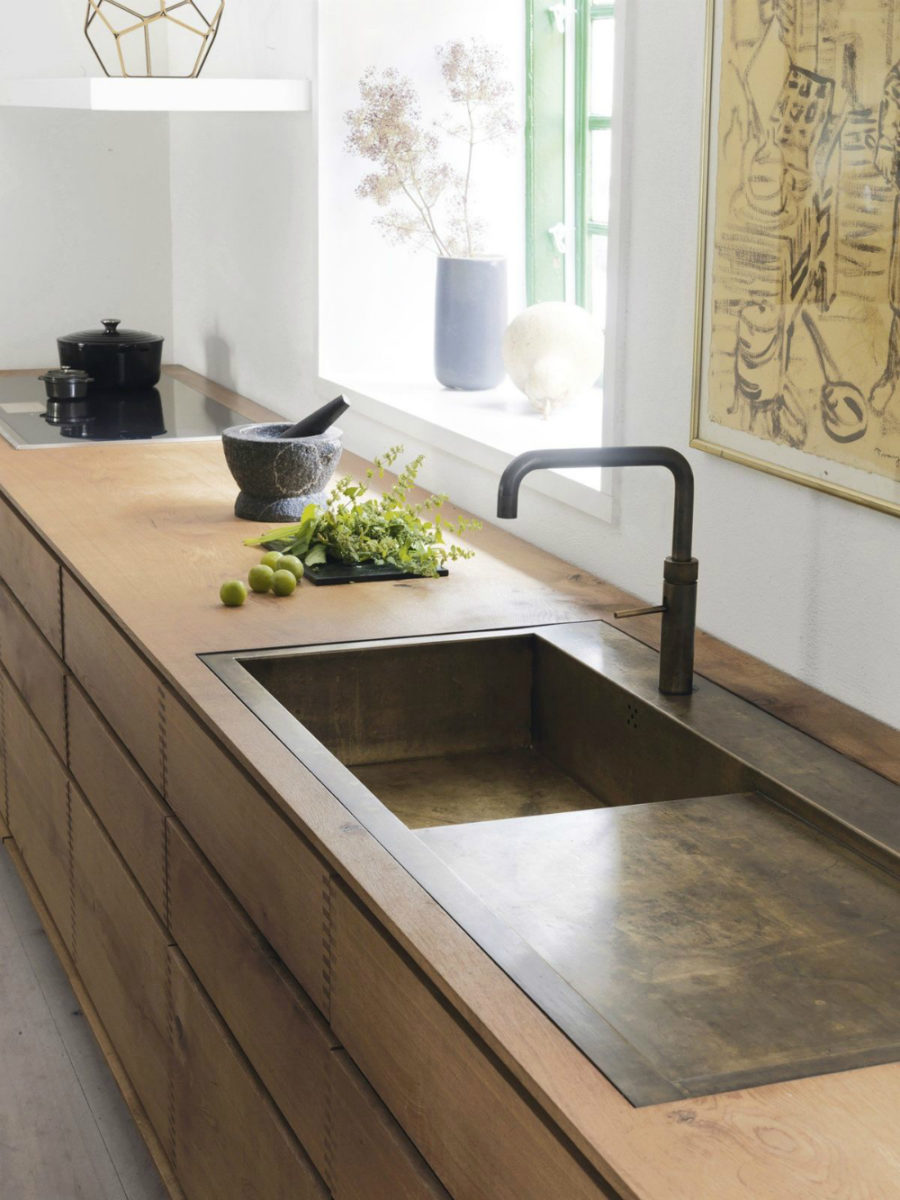



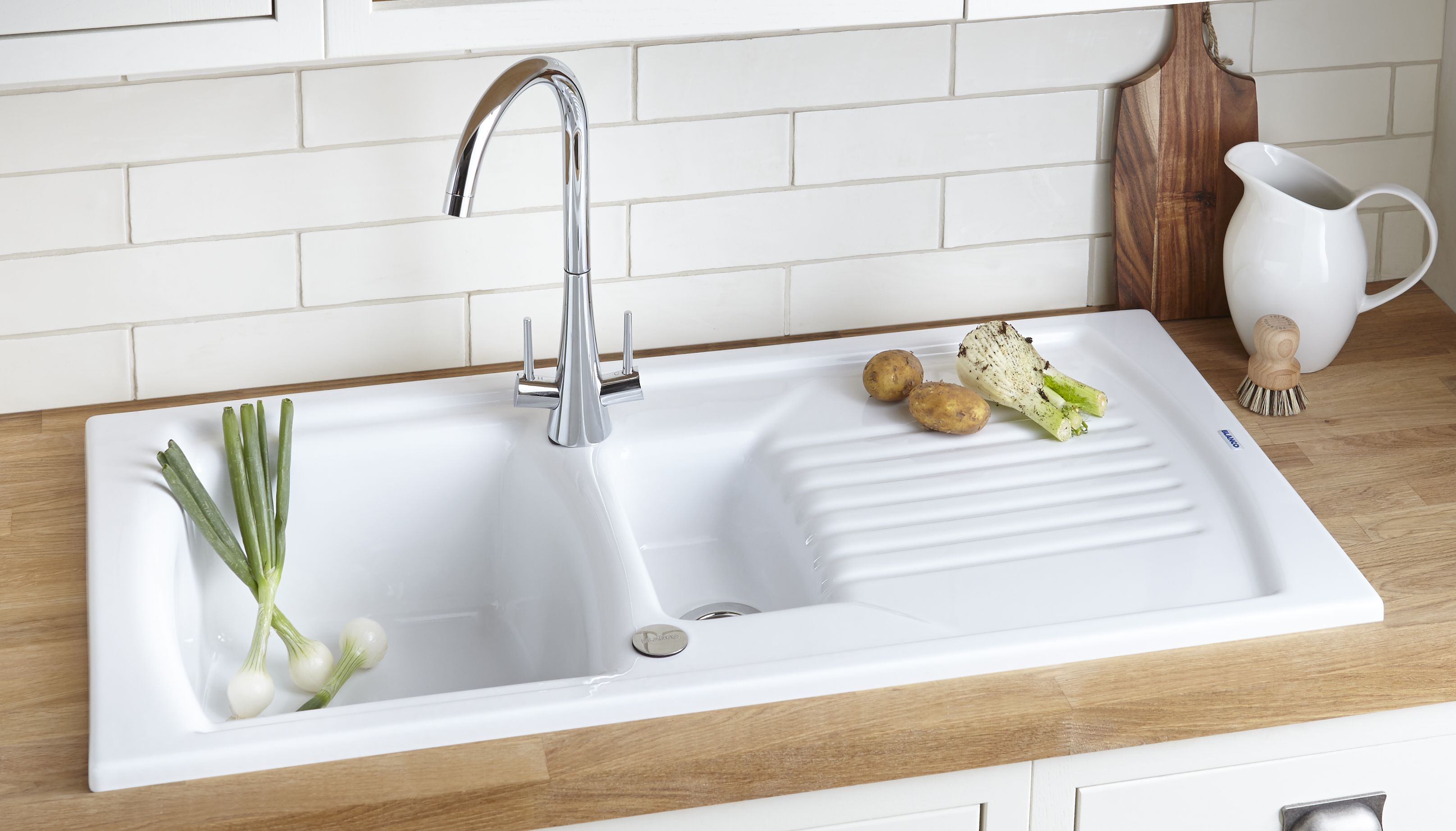
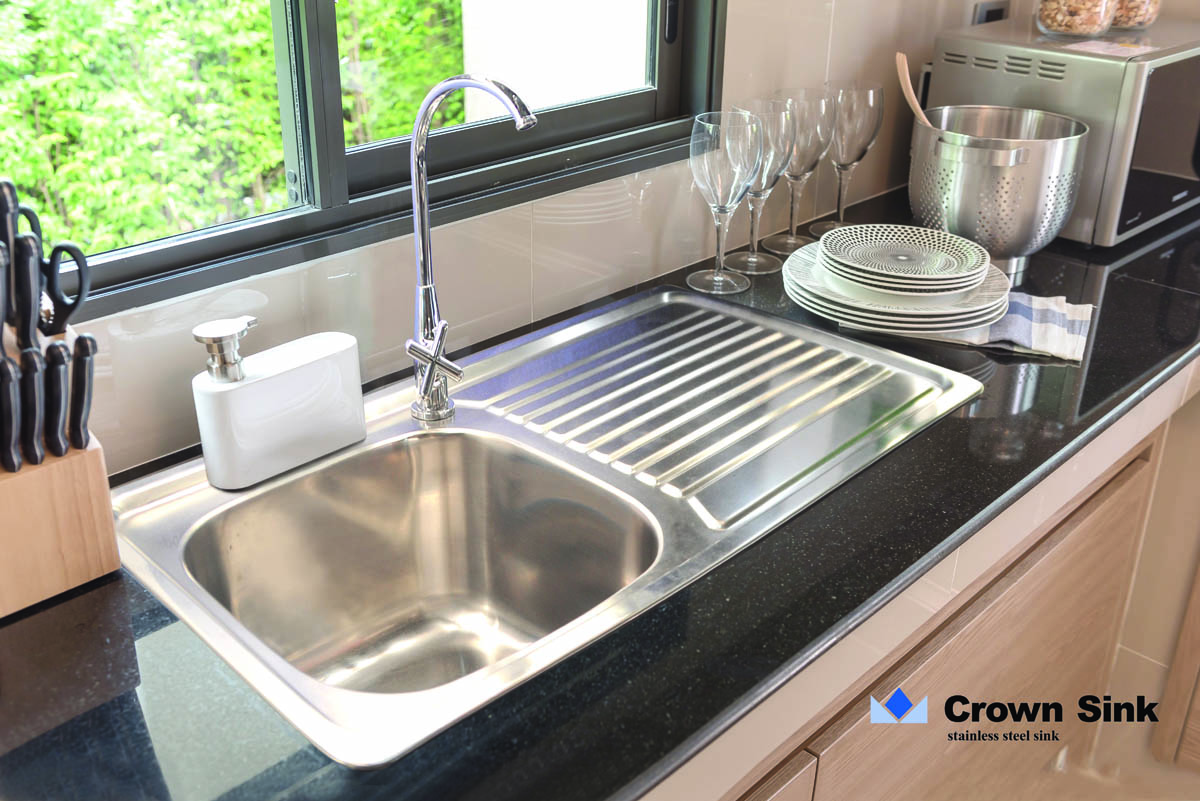

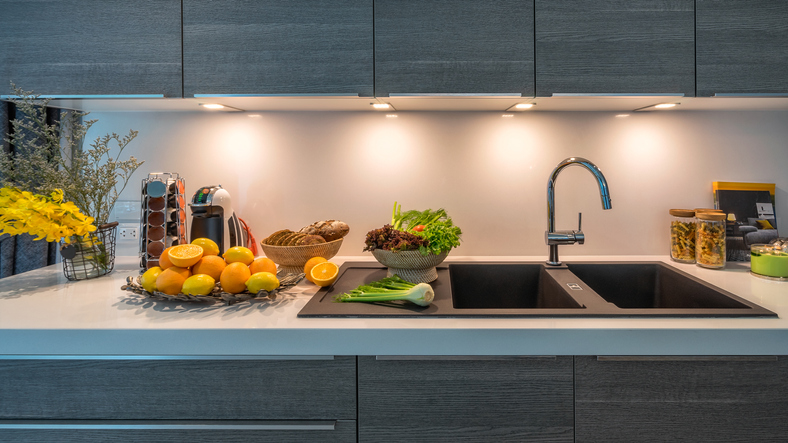


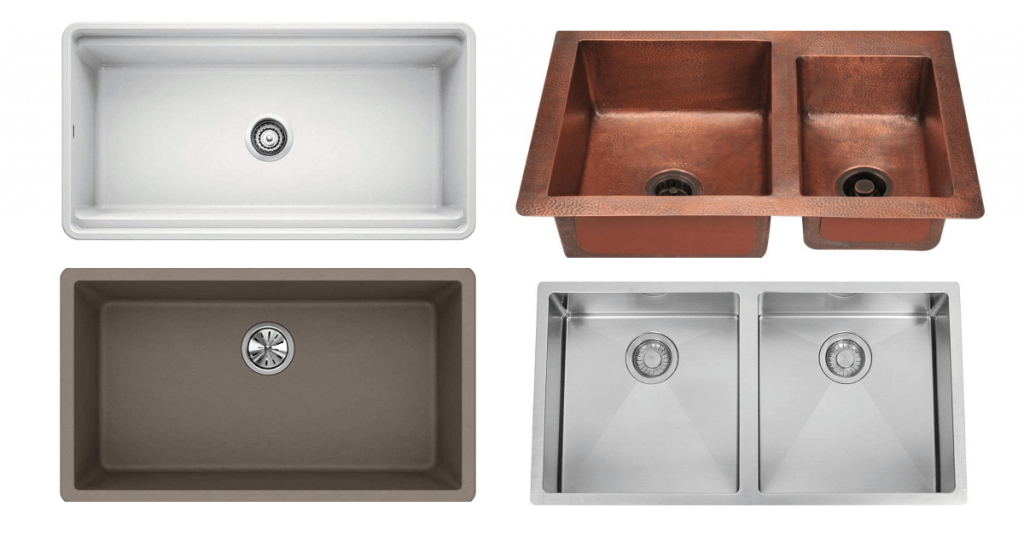




.webp#keepProtocol)
